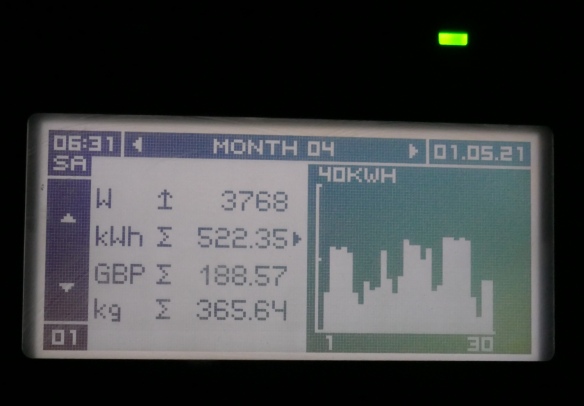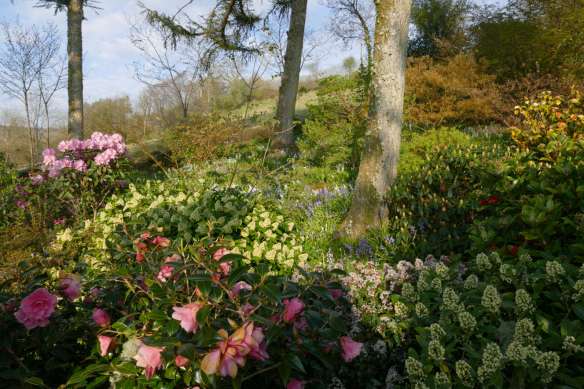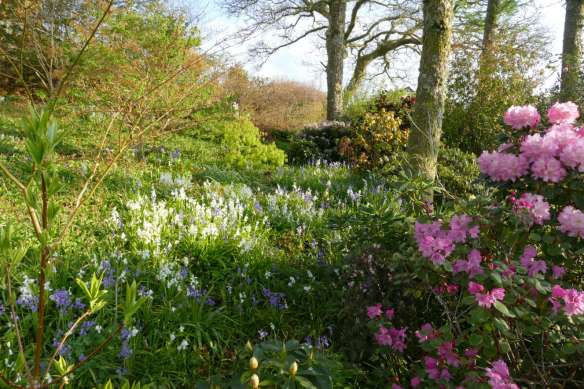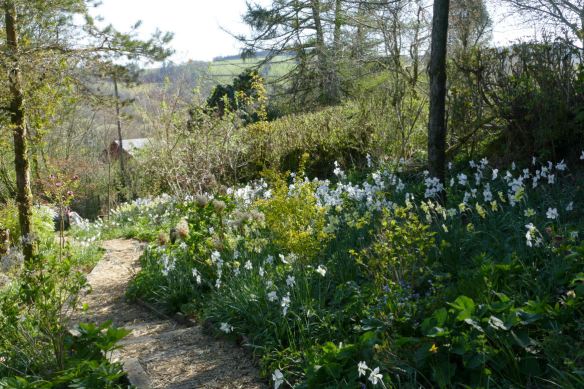April began with 4 glorious, sunny, if fairly chilly days, with almost no clouds in sight. A real delight. Even if the weather became progressively colder at night, with frosts on the second and third. 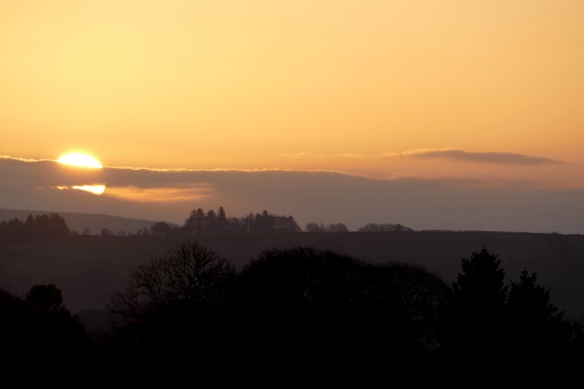

I found no spawning brook lampreys this year on Good Friday, April 2nd, but that was more than compensated for by our first family visitors for many months, when our elder son and fiancee joined us for one of these days of glorious sunshine, Red kites galore in the cloudless sky, an evening UUNI pizza, breakfast and then hand dived scallops on the terrace for lunch.

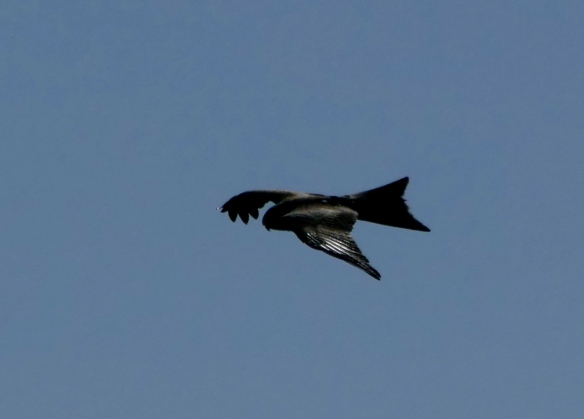



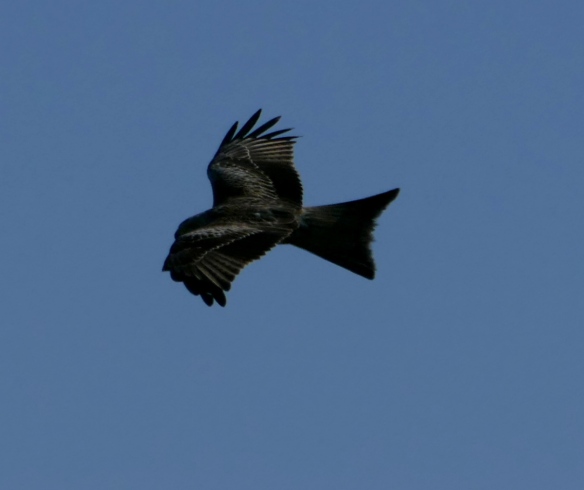
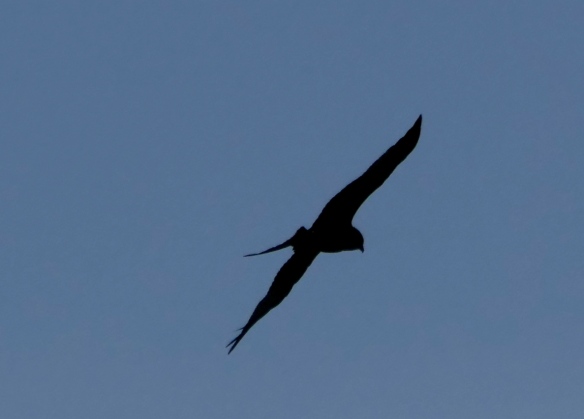
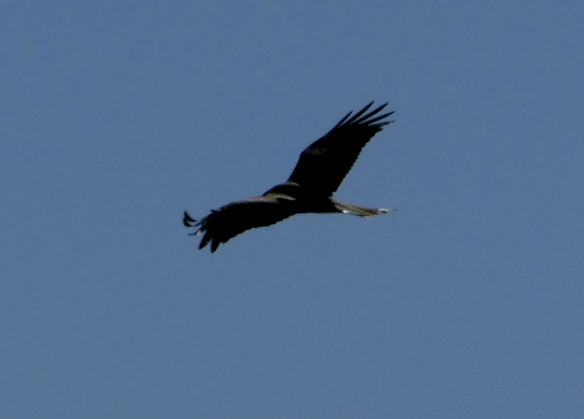

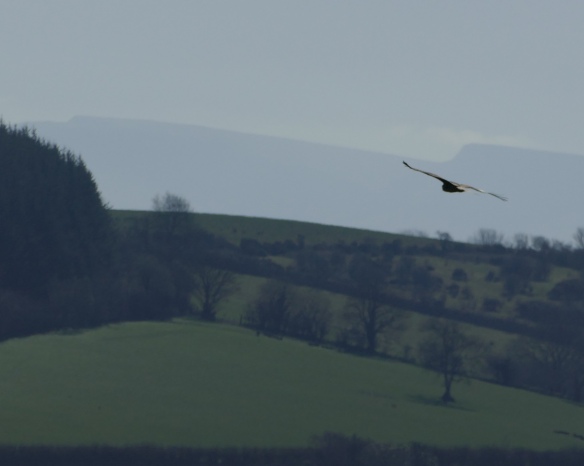

 Even if we were all wrapped up against the cold!
Even if we were all wrapped up against the cold!
The honeybees at last had fair weather, with low winds to forage, both in the garden and increasingly from the pussy willows, Salix caprea, which had just begun to bloom in the valley below, and the aberration of an unprovoked attack and sting on the back of my head on the last day of March from a bee near the deep beds, was swiftly forgotten.
The Narcissi continued to excel as we moved into the mid season flowers, in what has bee3n their best ever year.






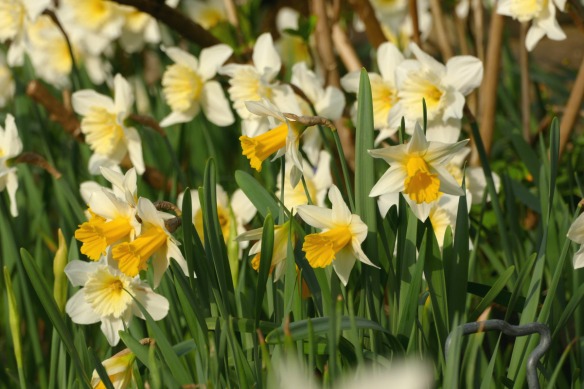
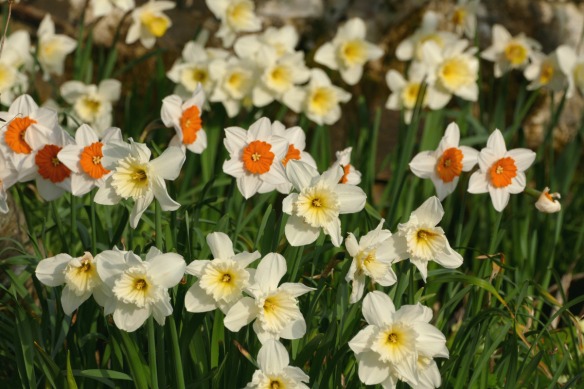
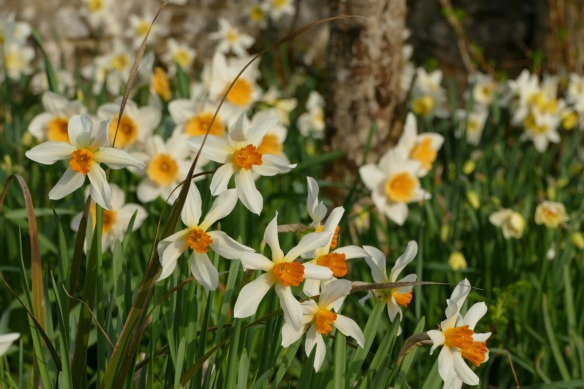
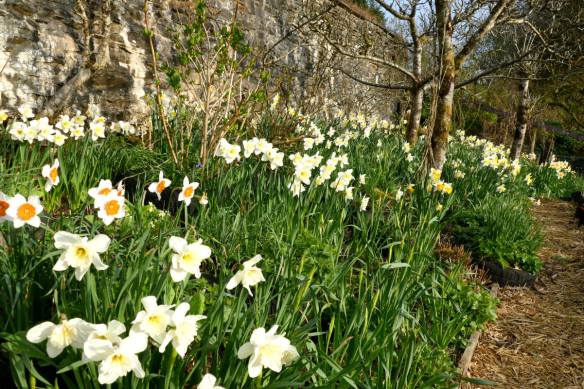

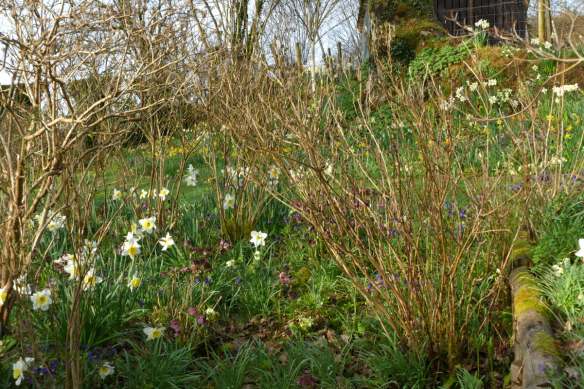

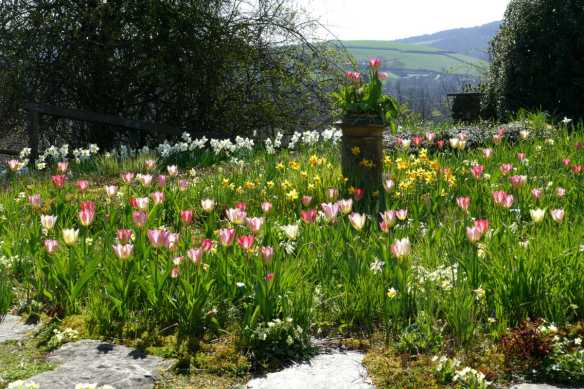
And the Camellias have also given us our best ever display, all these years after planting (15 years plus?), although they’ve once more confirmed to me, that they’re a plant breeder success story, not necessarily a really garden worthy plant group for our conditions, given the tendency of most, particularly the complex double forms, to turn brown at the slightest hint of frost. 

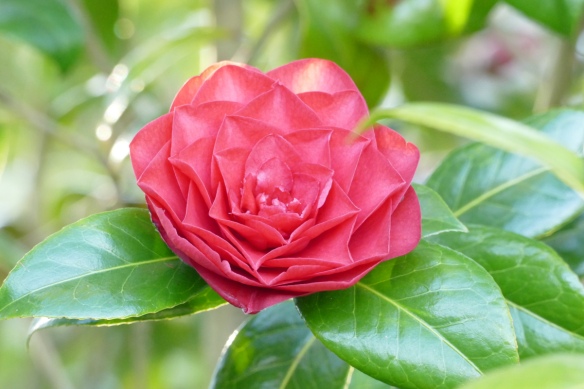 Still they do look fabulous as cut blooms in a bowl of water.
Still they do look fabulous as cut blooms in a bowl of water.
Snow flurries fell and issues with quite hard frost have continued throughout the third week of April, with minus 7, to minus 4 degrees being registered for many days in a row up to the 16th.
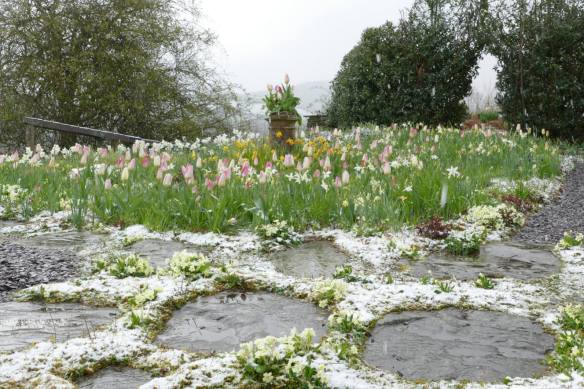


There has been inevitable damage to Hydrangea shoots, frosting of Camellia flowers, and the T. ‘Flaming Purissima’ tulips have flopped impressively and beautifully, encrusted with ice crystals to a point seemingly beyond redemption, yet by midday in the now more powerful midday sun recover completely, and in one area of the terrace have given their best display ever, with Narcissus ‘Thalia’ and N. ‘Actaea’ emerging to give extra whiteness.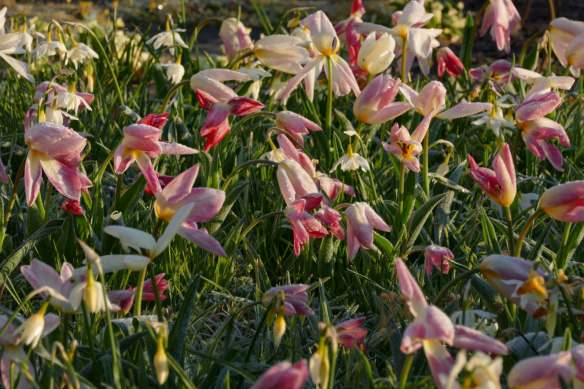
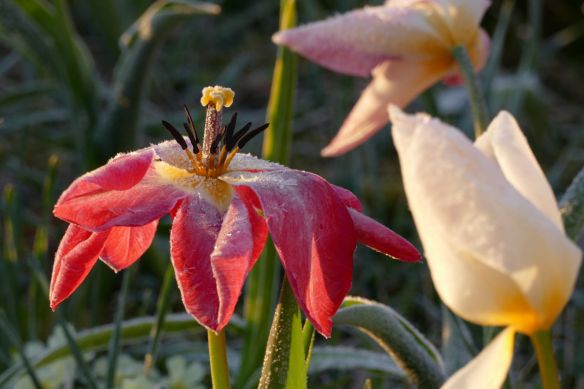
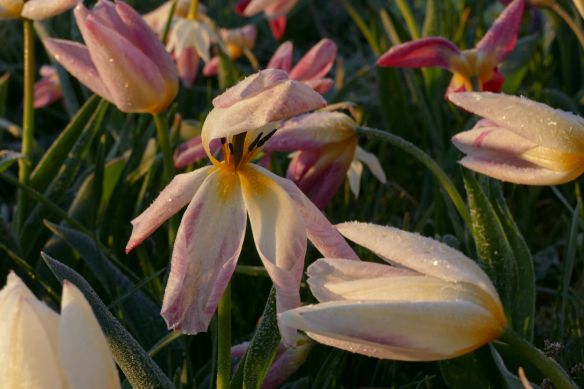

In the often lovely sunshine, in spite of the chilly Easterly or Northerly winds, the scene has been wonderful – one of the best impressionistic displays we’ve created. 
 I just need to remember to order 150 bulbs for each side of the terrace, this summer, to avoid running short! Only a few ever survive into a second or third year, so this is an indulgence, which this month long display justifies, for now.
I just need to remember to order 150 bulbs for each side of the terrace, this summer, to avoid running short! Only a few ever survive into a second or third year, so this is an indulgence, which this month long display justifies, for now.


 Amazingly, as an insight into how cold the season has been, our Daphne bholua ‘Jacqueline Postill’ is still filling the air with scent, about 5 months after she started to bloom in early December.
Amazingly, as an insight into how cold the season has been, our Daphne bholua ‘Jacqueline Postill’ is still filling the air with scent, about 5 months after she started to bloom in early December.
The continued cold, with winds, has knocked many native flowers – including gorse and willow, so the honeybees have struggled to get going, but the 3 remaining hives are all still viable – mainly flying later in the day, in sunshine, once temperatures have risen.

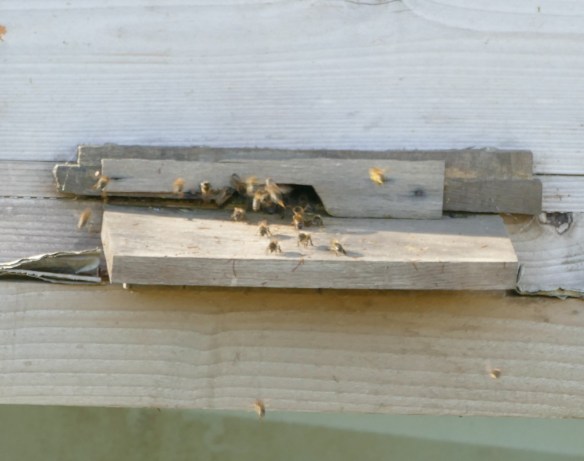 Since I still had a half filled uncapped super from the National hive, which I’d removed last autumn and stored, I opted to replace this, lest this hive be running low. No doubt there are potential issues with doing this, but the bees seem fine 2 weeks later, and are clearly beginning to build up numbers as we approach dandelion and apple blossom time.
Since I still had a half filled uncapped super from the National hive, which I’d removed last autumn and stored, I opted to replace this, lest this hive be running low. No doubt there are potential issues with doing this, but the bees seem fine 2 weeks later, and are clearly beginning to build up numbers as we approach dandelion and apple blossom time.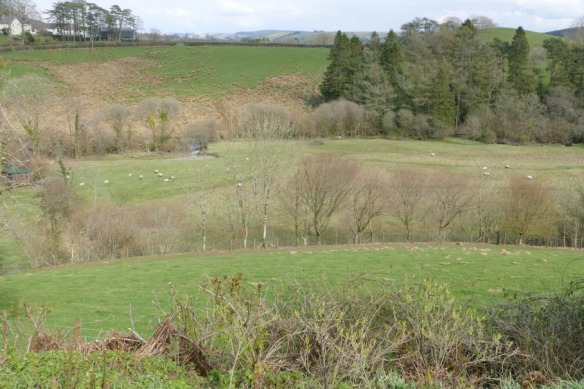
In the meadows, we’re glad we’re down to just 23 ewes and no lambs again this year, as grass isn’t keeping up with demands, we’re still feeding hay mid month (fortunately lots left), and with the forecast showing no real warming, and little rain ahead, it may be several weeks yet before the grass takes off.


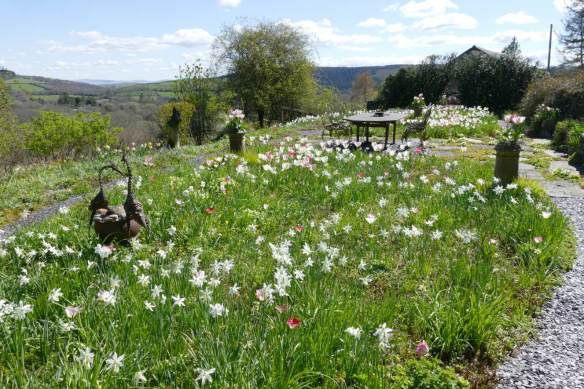




In the garden, only one light, tidy-up lawn cutting has been necessary, and the ever reliable kale which usually bridges the “hungry gap”, with leaves and purple sprouting, was ripped up a week ago, having been completely wrecked by the freezing winds in March.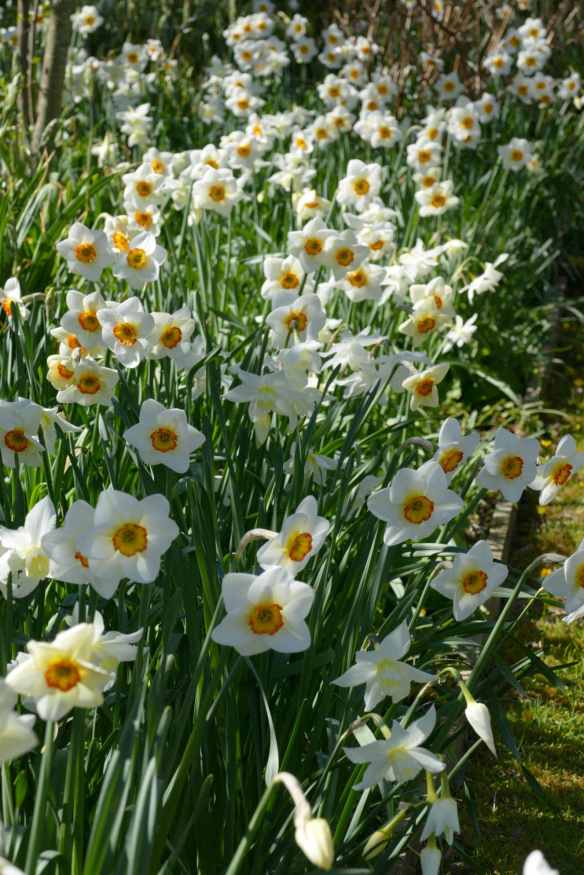

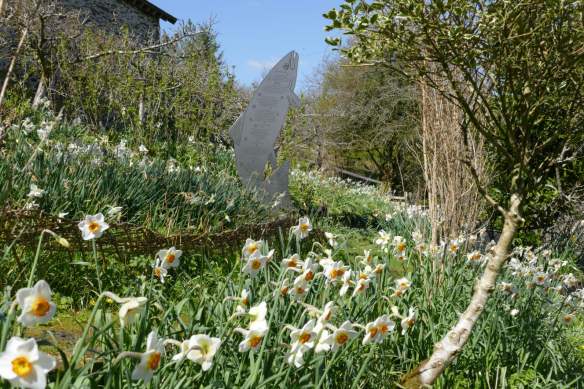
It wasn’t until mid month that I chanced planting potatoes, and sowing the first vegetable seeds, and then needed both water bottles, enviromesh and home made cold frames for extra wind protection to enable at least germination of cabbage, kale and lettuce. Carrots went in a week later.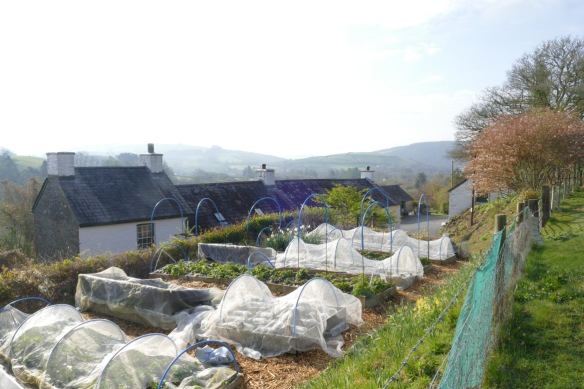



The first pair of swallows arrived quite late on the 24th, with the cuckoo a couple of days later.  The third wave of daffodils, particularly in the lower meadow copse were stunning this year, and with better weather for photography than one could normally expect, over many days. Narcissus ‘Merlin’, ‘Segovia’, ‘Actaea’, ‘Oryx’ and ‘Trellisick’ are the stalwarts here.
The third wave of daffodils, particularly in the lower meadow copse were stunning this year, and with better weather for photography than one could normally expect, over many days. Narcissus ‘Merlin’, ‘Segovia’, ‘Actaea’, ‘Oryx’ and ‘Trellisick’ are the stalwarts here. 
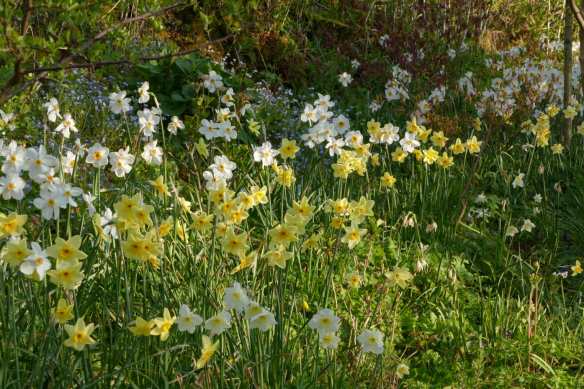


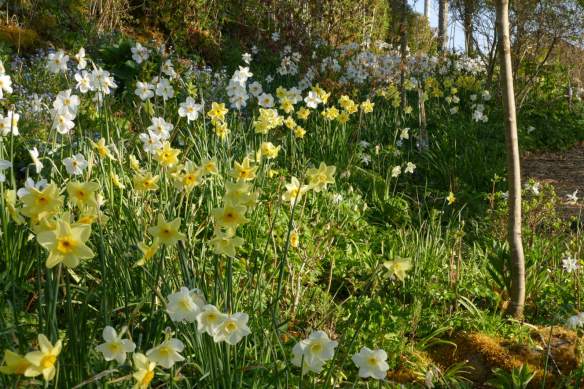


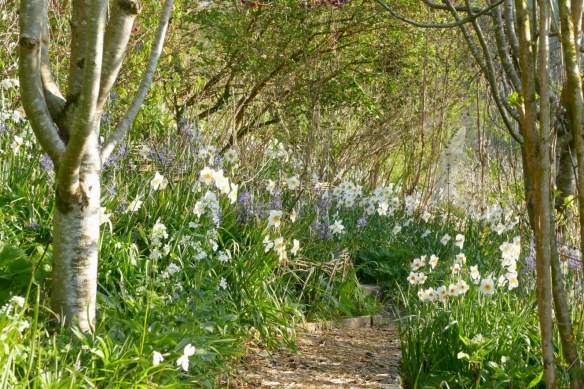
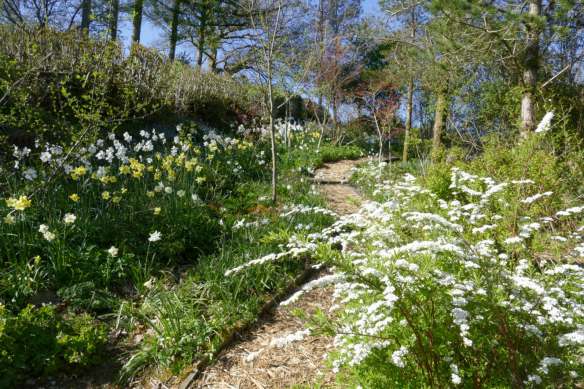



 Finally, we made good progress with developing the last section of steep bank beneath the Amelanchiers, trying to add in more interesting plants other than rampant Alchemilla, and did a lot more planting of seedling Sorbus and Skimmia cuttings in the new copse to the North of the vegetable area designed for pollinator interest, shelter, and many of the daffodil cultivars, now bulked up a little, after years sitting in big bags.
Finally, we made good progress with developing the last section of steep bank beneath the Amelanchiers, trying to add in more interesting plants other than rampant Alchemilla, and did a lot more planting of seedling Sorbus and Skimmia cuttings in the new copse to the North of the vegetable area designed for pollinator interest, shelter, and many of the daffodil cultivars, now bulked up a little, after years sitting in big bags.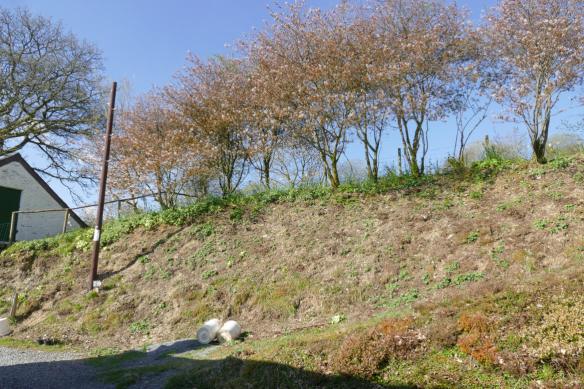



 By the end of the month April had broken many weather records – the sunniest I’ve recorded, beating last April’s high levels, and across Wales the sunniest ever beating the average by 45%; also the driest with just 19.2 mm of rain falling. However it was also consistently cold – across the UK, the Met Office records 22 days with a ground frost compared to just 12 days on average – so massive variations in parameters from the normal, not just slightly out of the normal range. See the full Met Office report for April here. The inverter record below, shows not just the high overall value of 522 KWH, but also how many days (15 by my reckoning), on which the output was near the maximum possible at this time of year, reflecting nearly cloudless skies.
By the end of the month April had broken many weather records – the sunniest I’ve recorded, beating last April’s high levels, and across Wales the sunniest ever beating the average by 45%; also the driest with just 19.2 mm of rain falling. However it was also consistently cold – across the UK, the Met Office records 22 days with a ground frost compared to just 12 days on average – so massive variations in parameters from the normal, not just slightly out of the normal range. See the full Met Office report for April here. The inverter record below, shows not just the high overall value of 522 KWH, but also how many days (15 by my reckoning), on which the output was near the maximum possible at this time of year, reflecting nearly cloudless skies.

